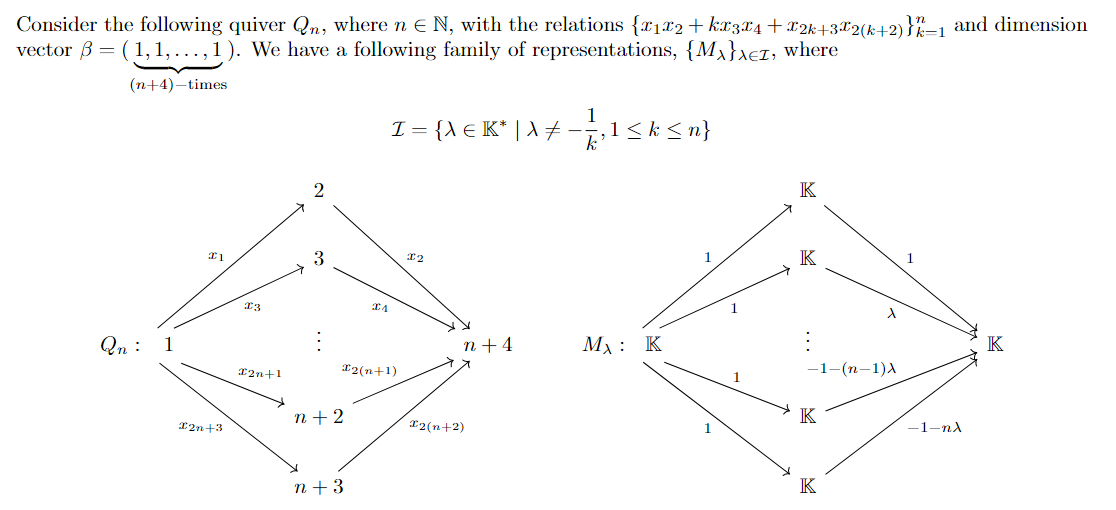Let $\mathbb{K}$ be an algebraically closed field of characteristics $0$. Let $A$ be a finite dimensional (associative and unital) algebra over $\mathbb{K}$. Assume there is a quiver $Q=(Q_0,Q_1)$, where $Q_0$ is the set of vertices and $Q_1$ is the set of arrows, associated to $A$, i.e., $A\cong\mathbb{K}Q/I$, with $0\not= I\subset \mathbb{K}Q$ is an admissible ideal. Further assume that the algebra $A$ is such that the quiver $Q$ is acyclic.
For a dimension vector $\beta$, the representation space $$ rep_{\beta}(Q,I):=\lbrace M\in\prod_{a\in Q_1}\mathrm{Mat}_{\beta(ha)\times\beta(ta)}(\mathbb{K}) \mid M(r) = 0,\text{ for all }r \in I\rbrace. $$ parametrizes $\beta$-dimensional representations of $(Q,I)$. The linear algebraic group $$ \mathrm{GL}_{\beta}:=\prod_{x\in Q_0}\mathrm{GL}_{\beta(x)}(\mathbb{K}) $$ acts on $rep_{\beta}(Q,I)$ by change of basis.
If I consider the quiver which looks like a commutative square and impose the commutativity relation, and consider the representation space with dimension vector $(1,1,1,1)$, then the representation space is an orbit closure, i.e., open orbit of codimension $0$ .
The representation space $rep_{\beta}(Q,I)$ is again irreducible and it has an open set of infinitely many codimension $1$ orbits of $M_{\lambda}$'s.
Now, I'm wondering what would be an example of an acyclic quiver with relations such that the representation space $rep_{\beta}(Q,I)$ has an irreducible component $\mathcal{C}$ such that $\mathcal{C}$ has an open (dense) set of infinitely many codimension $2$ orbits, for an appropriate dimension vector $\beta$? what about codimension $3$?
This is important to me. I would be extremely grateful for your help.

